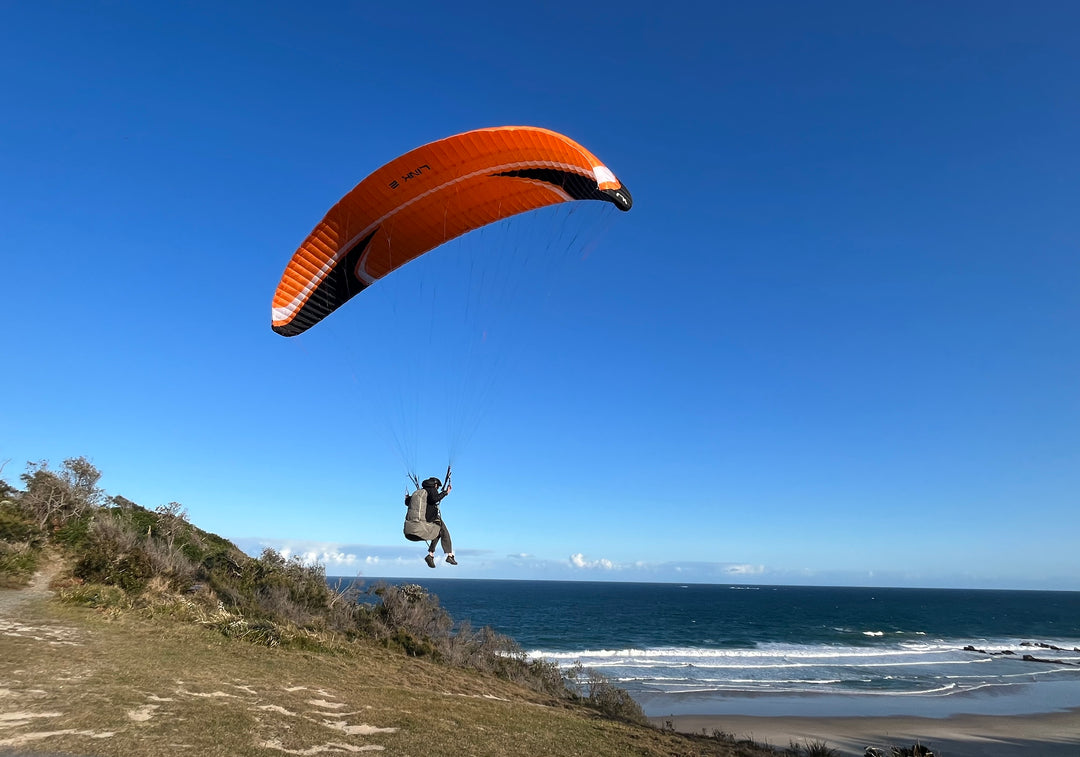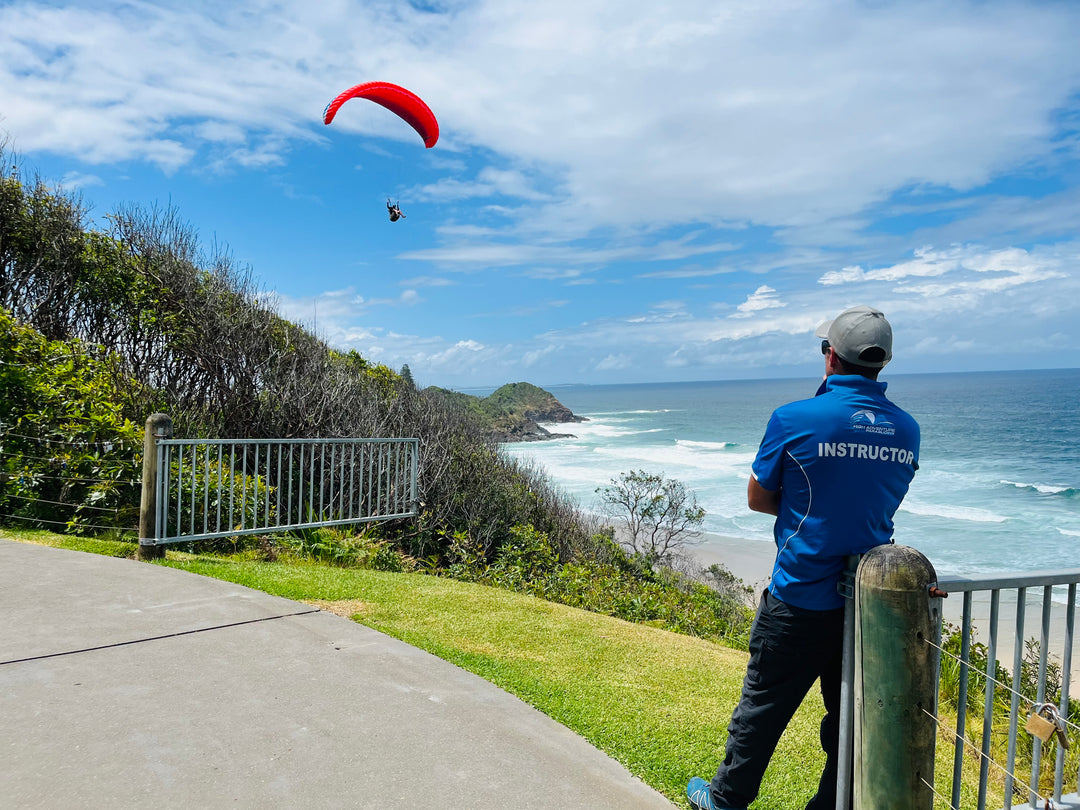Learn To
Paramotor
Paramotor
Our Learn to Paramotor Course will take you from complete novice to confident SAFA PPG pilot in just 14 days.
Led by world-class instructors, our extensive course is considered one of the best in Australia, taking you well beyond the minimum requirements to become a competent paramotor pilot.
Foot launch and wheelbase course options are available.
Please note: All our courses are run from our school in Laurieton, NSW.
Find out why High Adventure is the top paramotor school in Australia.

GROUND HANDLING: We put great emphasis on developing confident ‘kiting' so our pilots learn how to respond to their glider and understand it's reaction.
LAUNCHING TECHNIQUES: Forward launch techniques for low-wind conditions and reverse launch for higher wind conditions.
LAUNCH & LANDING PRACTICE: Build confidence to safely transition to flight and learn to assess ground conditions and safe landing options.
EQUIPMENT REVIEW & PRE-FLIGHT CHECKS: Learn about the equipment and how it works, plus learn how to conduct a paramotor and gear pre-flight safety check.
PARAMOTOR SIMULATOR TRAINING: Practice kiting your glider with the additional weight of the motor and get acquainted with the throttle. Getting a feel for the engine and what it’s like to apply power is a key technique for you to master.


It's what you've been waiting for! You'll perform launch sequences, now simply adding power. You'll practice launching, landing, and turns through radio assisted instructed flights. Lots of flights, ‘touch and go’s’ and some absolutely stunning cross-country flying are ahead of you.
When the conditions aren't right for flying, we use this 'down time' for theory classes.
The SAFA Training Syllabus is thorough, and so are our theory classes. Topics include: airspace rules and regulations, drag and thrust, torque effects, principals of flight, meteorology, emergency procedures and navigation.
Assessment of theory is via multiple choice exams.

Pre-flight checks * Flight preparation * Airspace regulations * Flying with other aircraft * Inflation/Taxi/Launch sequence * Launch and landing techniques * Launch and landing in various wind strength and conditions * Landing accuracy * Cross wind and downwind landings * Flight Path * Flight Skills * Turns * Safe use of Trim Tabs/Speed System * Inflation, Taxiing and Deflation utilising the motor * Fuel management * Motor Safety * Weather assessment * ... and more!
Need somewhere to stay during the course? We have comfortable private and shared cabins on-site at our school in Laurieton, NSW (not included in course fees). Booking is required.
Looking for more information on the course, licencing, how to get to our school, or alternative accommodation options? Check out our FAQs.